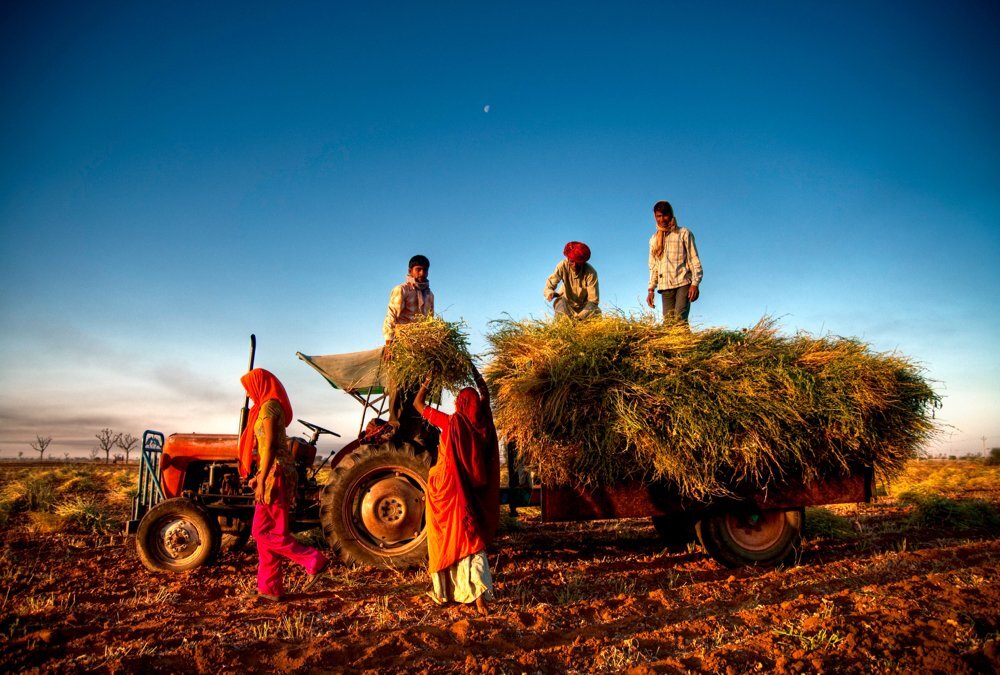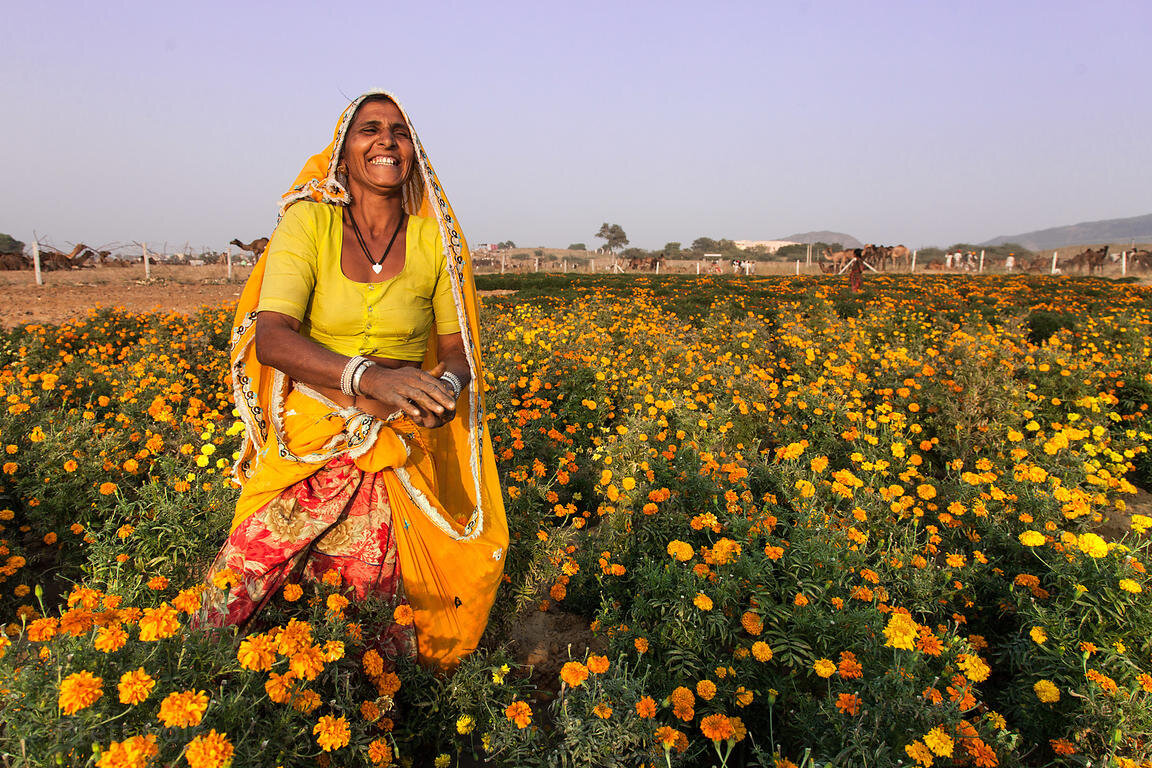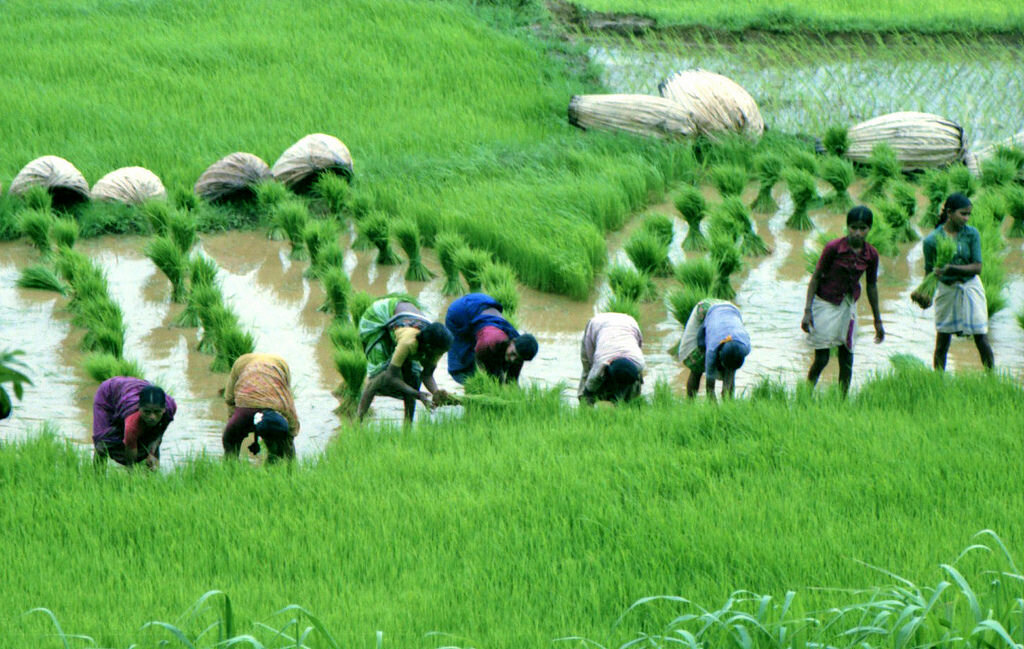India is the second largest food producer in the world, but roughly 35% of that production is lost due to a lack of knowledge and technology. In Europe, both are abundantly available, so what are we waiting for?
Huge mountain of food
While the Indian IT industry can compete with the rest of the world, Indian agriculture still lags miles behind modern production standards. Despite the lack of knowledge and technology, India produces a huge amount of food in the traditional way. Only China produces more. More than 50% of Indians, about 700 million people, work in agriculture. The majority are farmers with a small plot of land - there is hardly any large-scale agriculture.
More than rice
The main agricultural products in India are rice, cotton, ginger, cardamom and wheat. Thanks to the enormous variety of climate zones - subtropical, tropical, temperate, dry - there are ample opportunities to grow all kinds of fruit and vegetables, both for the Indian market and for export. In western India, for example, grapes are grown on a large scale, which can be found in supermarkets in Europe. In the Himalayas many apples are grown, mainly for the internal market. India also offers cultivation areas with good soil quality.
Temperate climate
The Deccan Plateau - the large region linking Pune, Nashik, Hyderabad, Bangalore, Coimbatore and Kholapur - offers a large agricultural area with a temperate climate. The Deccan Plateau has a fairly consistent climate with moderate temperatures. The minimum night temperature is 16°C in winter and the normal maximum temperature is 30°C, with the exception of April and May when night temperatures are a minimum of 22-23°C and a maximum of 35-38°C. The climate in the north of the country, in the foothills of the Himalayas, is somewhat seasonal. There are several microclimates here.
Potatoes
North Maharashtra, Gujarat, Madhya Pradesh, Upper Pradesh, Orissa and Bihar, all lowlands are very hot from March to September with monsoon from mid-June to late August. Rajasthan has mainly a desert climate with high temperatures from March to October; the north has relatively cold winters (above 0°C). Punjab has hot summers and cold winters. Potato cultivation (Indians are not only rice eaters but also very keen potato eaters) takes place here from November to May. Kodaikanal and Ooty (Tamil Nadu) offer a favourable climate for coffee, tea, vegetable and flower growers. Kerala in the east has the Western Ghats mountain range, which connects to the Kodaikanal mountain range, centred on Munnar. Here, tea is mainly grown.
"Western" vegetables
Himachal Pradesh in the north of the country offers a similar climate. Farmers in this region want to make the most of the climatic and soil conditions and grow all kinds of "Western" vegetables such as asparagus, broccoli, lettuce, coloured peppers, celery, Brussels sprouts, European carrot, parsley, leeks and snow peas. A considerable area in the state already grows vegetables of European origin. However, the northern states are located in hilly areas, which often makes logistics a challenge. Tamil Nadu and Andhra Pradesh consist mainly of tropical dry areas, at about 300 metres above sea level. There is plenty of cultivation here from June to September, after which the rainfall is often too erratic. The main production includes rice, bananas, coconut, ginger and cardamom. Kerala also has a large humid coastal area where sufficient water is available.
The chart below lists the different vegetables and where they are grown in India:
| Product | Annual output ('000 metric tonnes) | Region | Advantages of the region |
| Tomatoes | 21,200 (2020-2021) | Andhra Pradesh, Madhya Pradesh, Karnataka, Gujarat, Odisha, West Bengal, Chhattisgarh, Maharashtra, Bihar, Haryana, Uttar Pradesh, Telangana and Tamil Nadu. | Suitable (loam) soil, correct PH value, government support. |
| Cauliflower | 9,174 (2018-2019) | Uttar Pradesh, Karnataka, West Bengal, Punjab, Bihar, the northern Himalayas and in the Nilgiri Hills in the south. | Cauliflower usually grows in the cold season (18 to 20°C). Good soil fertility. |
| Broccoli | 8.6 (2017) | Maharashtra, Tapi district | Suitable loamy soils, correct PH values, temperatures between 18°C and 23°C. |
| Cucumber | 1,100 (2019) | Haryana, Karnataka, Madhya Pradesh, Tamil Nadu, Andhra Pradesh, Telangana, Assam, Uttar Pradesh, Bihar, Jammu and Kashmir. | Good soil, suitable climate (moderate to warm). |
| Kool | 9,207 (2019) | Uttar Pradesh, Orissa, Bihar, Assam, West Bengal, Maharashtra and Karnataka. | Suitable climate (cool and humid) In winter around Nashik (Maharashtra) and Ooty (Tamil Nadu) and Kerala. |
Traditional cultivation
Cultivation in Inda is often still very traditional. There are hardly any glass greenhouses: generally, greenhouse foil is used to protect crops. Nevertheless, India has made progress with regard to cultivation aspects and the use of foil, shade and net greenhouses. The supply industry has also developed and equipment and facilities (greenhouses and other requirements for cultivation) are often manufactured in India itself. However, income from production is modest and growers do not make large investments in cultivation production. Nevertheless, there is a growing interest in technology, such as fertigation (fertilisation and irrigation), automation, substrate growth, semi-automatic climate control, modern cultivation techniques, data recording etc.
Agtech
According to researchers from the Tamil Nadu Agriculture University, India throws away billions of dollars worth of fresh fruit and vegetables every year - about 35 to 40 per cent of its total fruit and vegetable production. This is due to lack of proper harvesting methods, no or inadequate transport, poor or no cold storage facilities and/or refrigerated transport. Although India is one of the largest producers of fruits and vegetables, its export potential is not being realised. Agtech aimed at rationalising supply chains and improving agricultural efficiency in India has an estimated potential of US$ 170 billion.
Quality
Thanks to the growing focus on healthy lifestyles, the demand for high-quality products is increasing in India. According to a major market study, the Indian organic market will grow from USD 177 million in 2020 to a market worth USD 553 million in 2026. Officially, India has the largest number of farmers active in organic farming (835 thousand), but it accounts for less than 1 per cent of global organic production (worth around EUR 80 billion). In terms of total area under organic cultivation, India ranks 9th with 1.49 million hectares. However, the organic sector in India is unregulated and not transparent.
Online food retail
The demand for high-quality and organic products is fuelled by the young population, their growing disposable income and the trend to eat out. The restaurant industry is booming and interest in foreign cuisines and products is huge. In addition, during the pandemic, online food retail has grown exponentially in India. Shopping or ordering food through online supermarkets or delivery services has become established in India at a rapid pace. As a result, the online grocery market grew by 80 per cent in 2020 alone and the Indian meal delivery market will continue to grow by around 30 per cent annually to a value of USD 8 billion by 2022, according to a study by the Boston Consultancy Group and Google.
Workshop: Market entry in India
Does your company have those innovative fertigation or automation solutions, but are you unsure about your first step into the Indian market? IndiaConnected has developed a high quality workshop, where during a two-hour session, we will answer your most pressing questions regarding a smart market entry in India.
Get a better understanding of what is involved in your market entry in India.
Receive valuable feedback on your current India strategy from independent experts.
Expertise in every field: sales, manufacturing, legal, tax, finance, supply chain, recruitment, etc.
In the workshop, our local experts with knowledge of your specific sector will work with you to explore your issue and formulate possible answers and strategies. Afterwards, you will receive a report.



